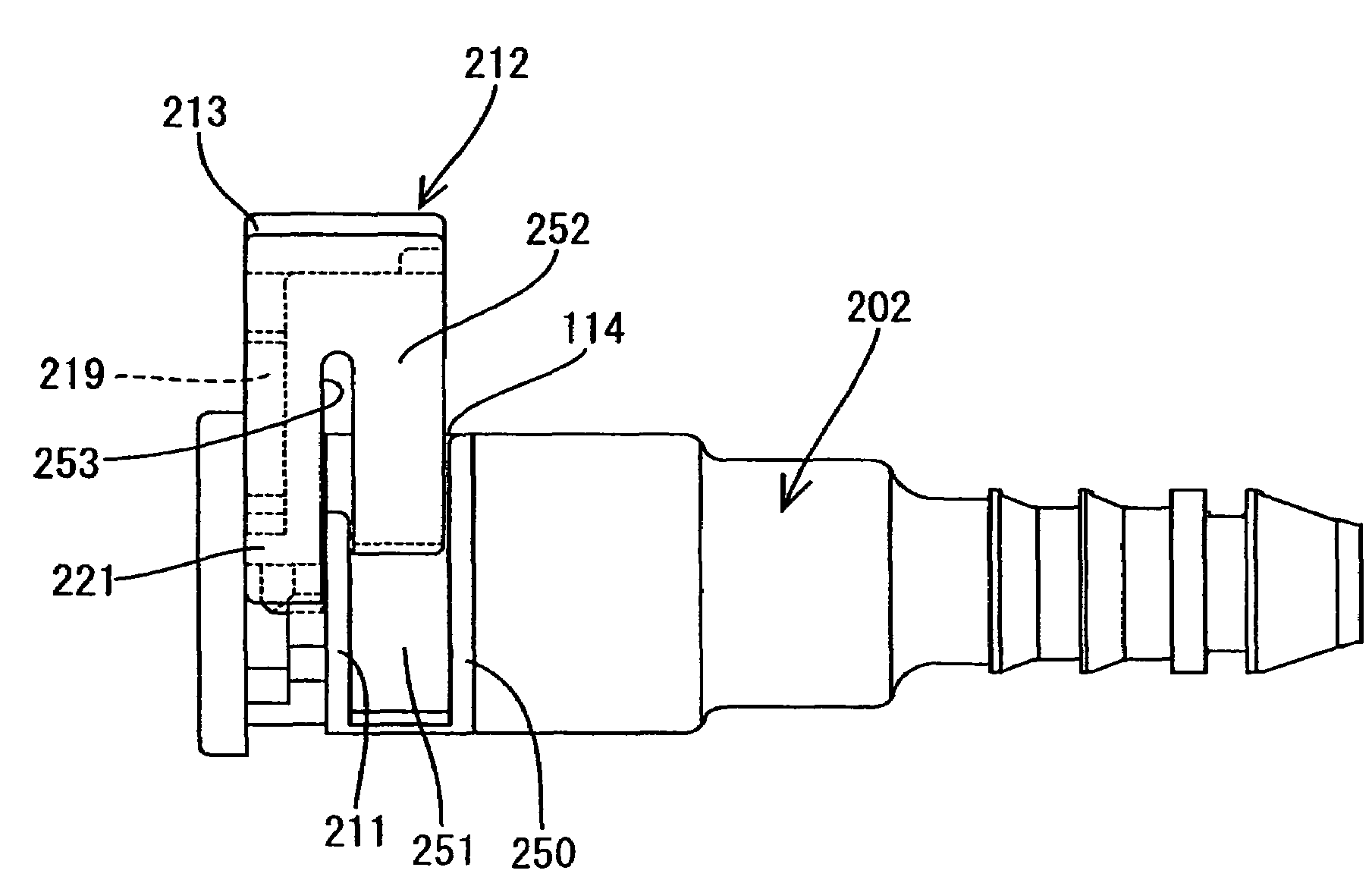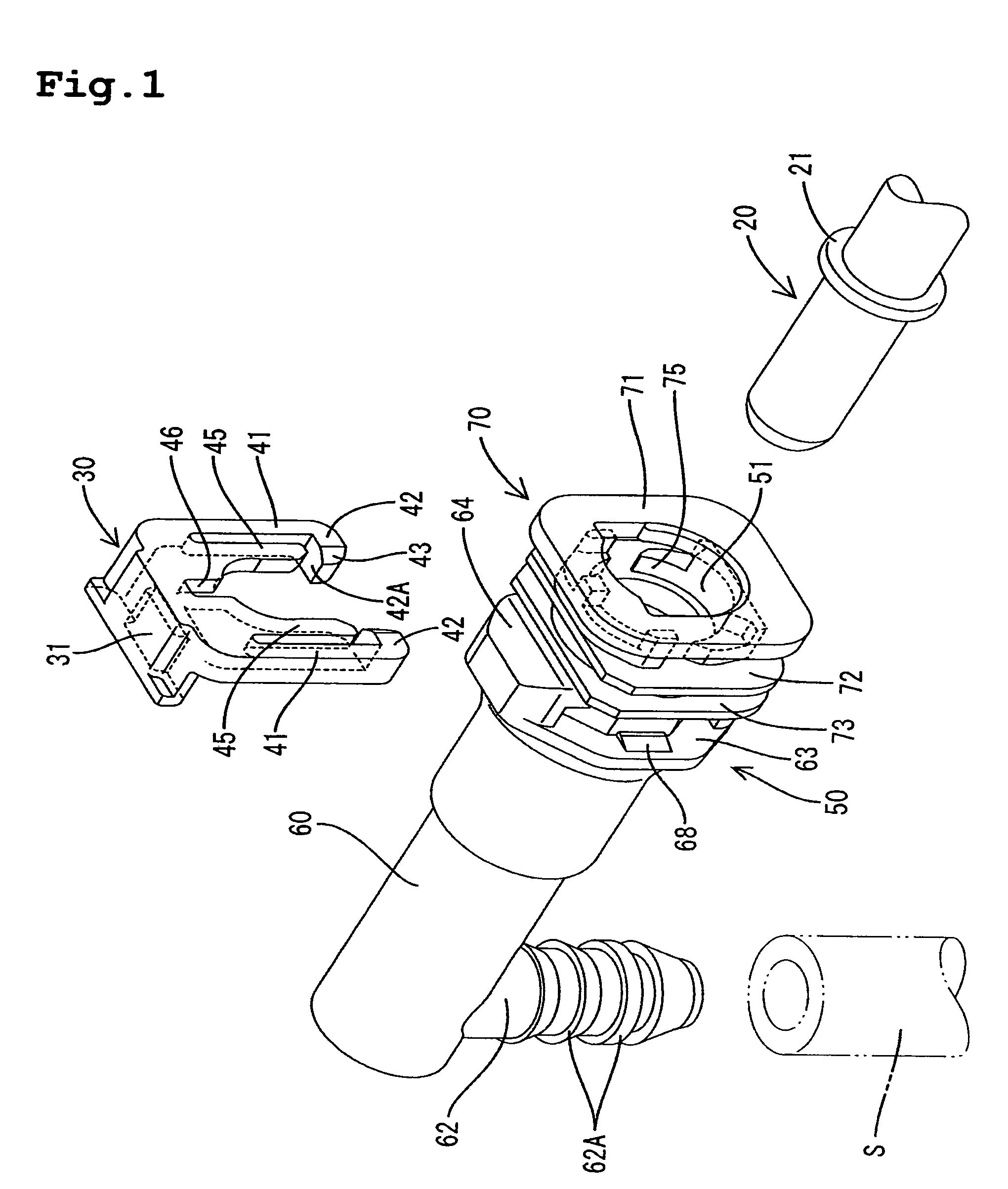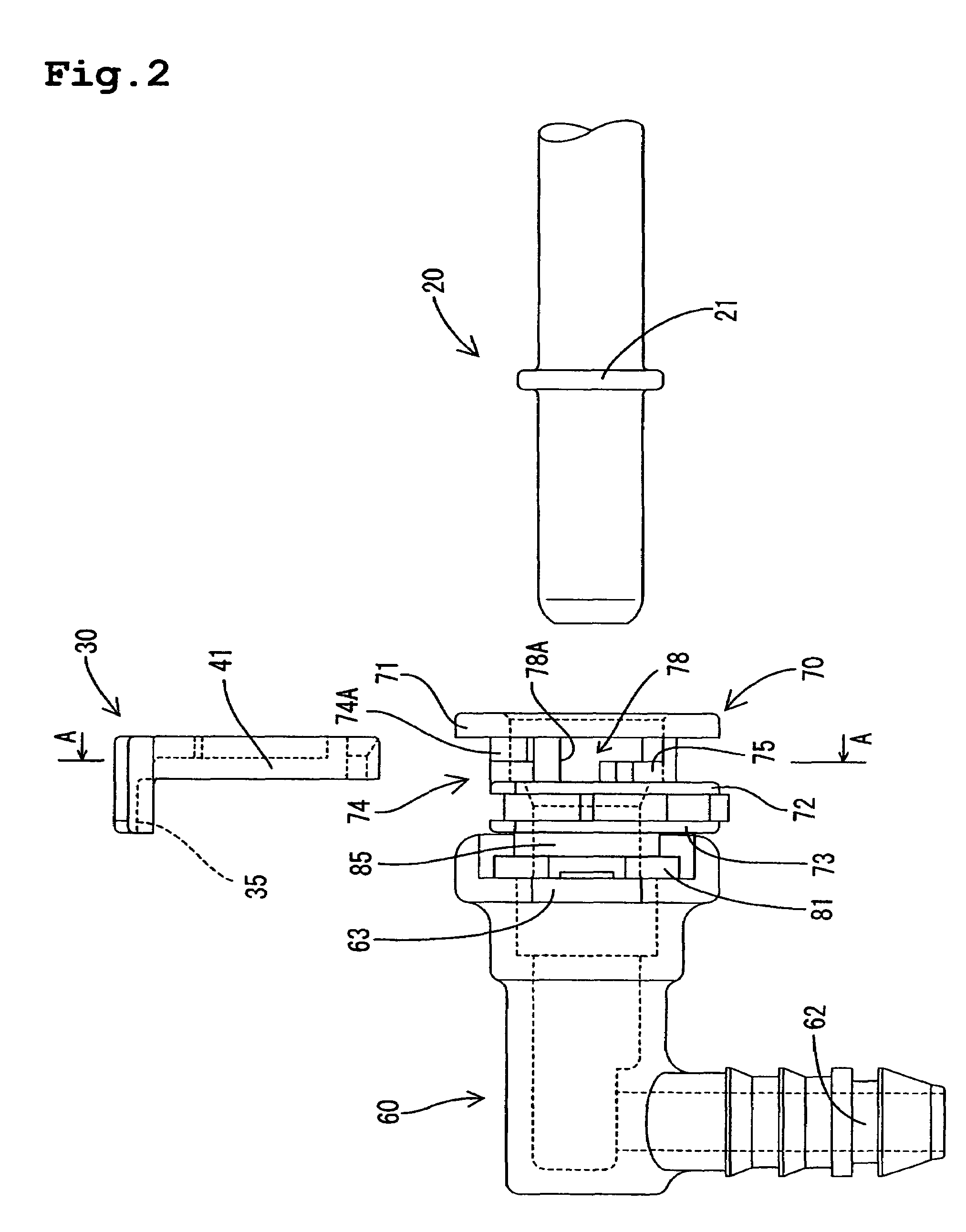Pipe joint
a pipe joint and pipe technology, applied in the direction of hose connections, bends, clutches, etc., can solve the problems of inability to ensure the safety of the retainer and the inability of the conventional pipe joint to be a general-purpose item, and achieve the effect of improving assembly efficiency
- Summary
- Abstract
- Description
- Claims
- Application Information
AI Technical Summary
Benefits of technology
Problems solved by technology
Method used
Image
Examples
first embodiment
[0051]Several embodiments of the present invention will be described. FIGS. 1 to 16 illustrates the pipe joint of a Referring to FIG. 1, a rigid pipe 20 is made of a synthetic resin or a metal for example. A retaining flange 21 is formed on a distal end of the rigid pipe 20 so as to extend about the entire periphery of the rigid pipe 20. A pipe joint body 50 is divided into front and rear components as will be described later. The front component is a tube connector 60 serving as a first piping connector in the invention. The second component is a rigid pipe connector 70 serving as the second piping connector. A flexible tube S is adapted to be connected to the tube connector 60. A retainer 30 and the rigid pipe 20 are adapted to be connected to the rigid pipe connector 70. In FIG. 1, the left side is the front and the right side is the rear.
[0052]The pipe joint body 50 includes a tube-fitting portion 62 formed on an end of a cylindrical portion and bent at some angle downward (in ...
fourth embodiment
[0081]FIGS. 20 to 30 illustrate the invention. Referring to FIG. 20, a rigid pipe P is made of a synthetic resin or a metal. A retaining flange 101 is formed in a distal end of the rigid pipe P so as to extend about the entire periphery. A pipe joint body 102 is made of a synthetic resin into a generally right cylindrical shape. The pipe joint body 102 has a distal end formed with a tube connector 104 having a plurality of engaging protrusions 103. A tube T is connectable to the tube connector 104. Furthermore, the pipe joint body 102 has a bore 105 formed therein so as to extend axially through the pipe joint body 102. The rigid pipe P is adapted to be inserted into the bore 105.
[0082]A stepped portion 106 is formed in a boundary between the bore 105 and a portion corresponding to the tube connector 104. The bore 105 has an entrance with stepped portion including a larger diameter. Two O-rings 107, a spacer 108, and an O-ring presser 109 are inserted in the larger diameter portion ...
fifth embodiment
[0104]The operation and advantages of the pipe joint of the fifth embodiment will now be described. The rigid pipe P is initially inserted into the bore 105 after the retainer 112a has been located in the preliminary lock position. When the rigid pipe P reaches the insertion depth, the engagement arms 121 are spread apart such that the engagement claws 122 are disengaged from the stepped portions 123 (the state as shown in FIG. 32). In this condition, the operator presses the upper face of the base of the retainer 112a and forces the retainer 112a together with the checker 115a into the side of the pipe joint body 102a. The engagement claws 122 are then brought into sliding contact with the outer faces of the stepped portions 123. When the retainer 112a has reached the final locking position, the detecting piece 121 is resiliently restored towards the original configuration and the engagement claws 122 engage the underside of the pipe joint body 102a. In this case, the locking piece...
PUM
 Login to View More
Login to View More Abstract
Description
Claims
Application Information
 Login to View More
Login to View More - R&D
- Intellectual Property
- Life Sciences
- Materials
- Tech Scout
- Unparalleled Data Quality
- Higher Quality Content
- 60% Fewer Hallucinations
Browse by: Latest US Patents, China's latest patents, Technical Efficacy Thesaurus, Application Domain, Technology Topic, Popular Technical Reports.
© 2025 PatSnap. All rights reserved.Legal|Privacy policy|Modern Slavery Act Transparency Statement|Sitemap|About US| Contact US: help@patsnap.com



